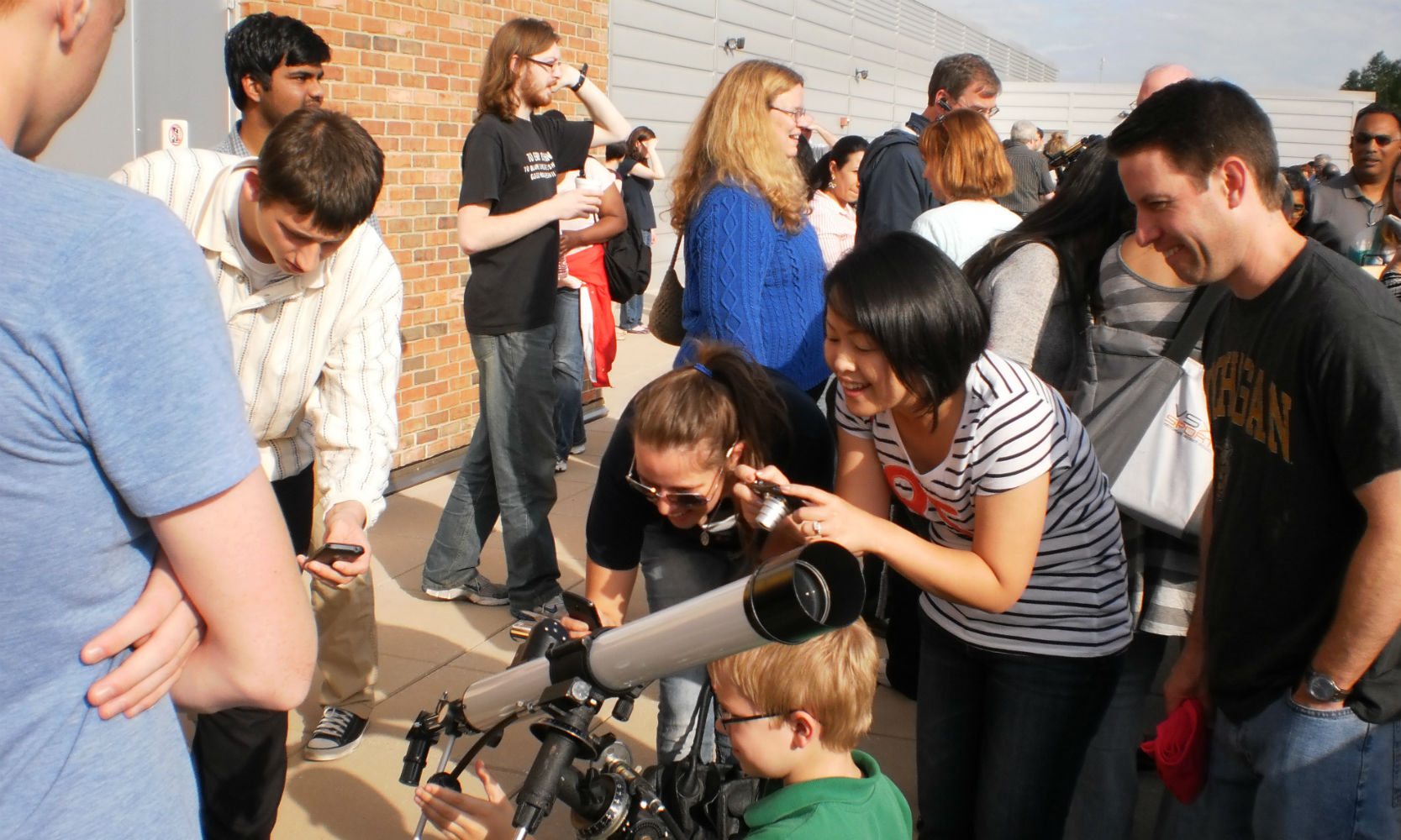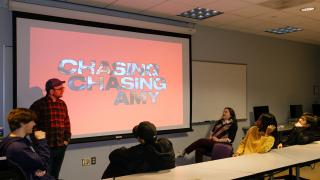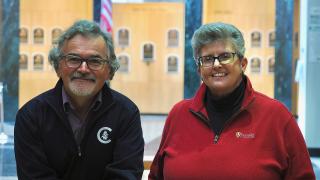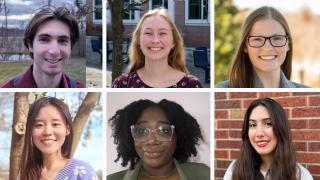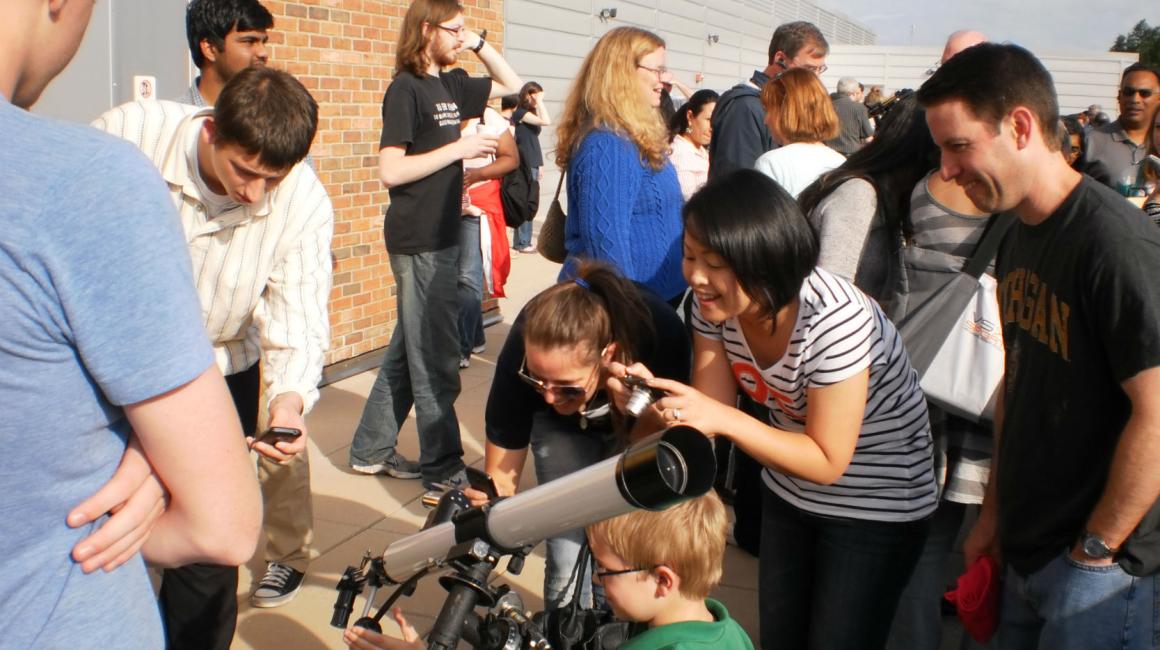
Physics and Astronomy Lecturer Carrie Swift has seen many astronomical phenomena.
Halley’s Comet. A total solar eclipse. Comet Hyakutake.
But one of her most memorable celestial viewings happened at a campus public observation event—the Transit of Venus. To see the planet cross the sun, more than 300 people stood on the Science Learning and Research Center’s third floor observation deck and took turns using the Observatory’s telescopes, which had solar filters for safe viewing.
“So many people gathered here for one reason. Most likely no one will be alive to see the next transit (in 2117) and we all took advantage of the opportunity to see it together,” she said of the June 2012 occurrence. “That’s what makes that event so memorable for me. It was really exciting.”
Swift enjoys the campus’ “Star Parties”—as the sandwich board-type sign in the Observatory says—because it’s a way to share her love of the sky and the knowledge of faculty, students and alumni with attendees.
And she’s looking forward to hosting them again this spring.
Every Wednesday, now through May 4, Public Nights at the Observatory will take place from 9 to 10:30 p.m. The complimentary experience is weather permitting and requires suitable sky conditions.
This time of year sky gazers are likely to see the winter constellations—like Orion, Jupiter, star clusters and nebula, which is an interstellar cloud, Swift said. Typical weekly attendance ranges from 15 to 50 people, depending on what can be seen.
Swift also said it’s important to wear weather-appropriate clothing and arrive 30 minutes early if there’s a reason needed for individualized attention, like research or wanting to set up a personal telescope.
Nathaniel Fuller, a 2015 graduate who assists Swift at these events, says he attended various sky observation nights as a child. And he feels it’s an important campus offering because it may pique scientific curiosity.
“It’s good for people to come and ask questions about space. It may spark an interest in science,” Fuller said. “Not only does it get information out there, it also helps connect you to what you see.”
The public observation nights, which have been happening on campus for more than 30 years, are a community staple. And Swift is glad to have people come to learn about what they see when they look up—and what it means.
“It’s getting an understanding of a universe that’s broader than our daily lives,” she said. “We live in a world where human activities have a huge impact on our planet. Understanding that our planet is just this tiny little thing in this much larger universe and we have to take care of it because it’s all we’ve got is an important lesson.”
More information about public observation nights.

